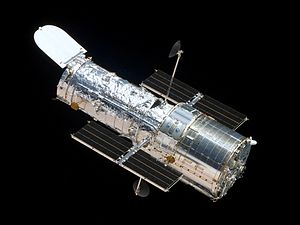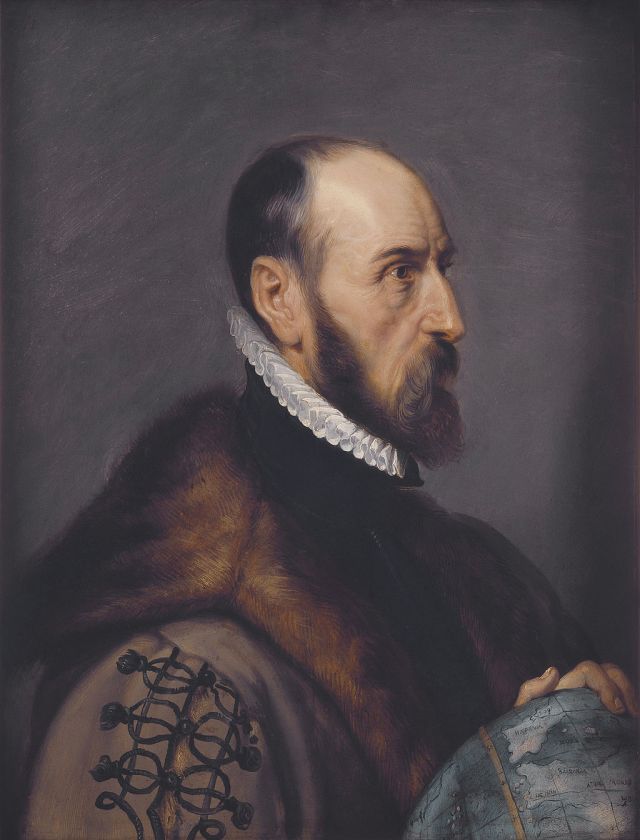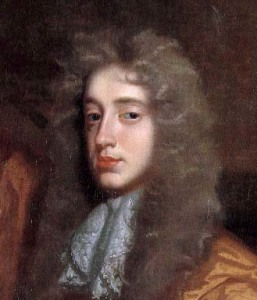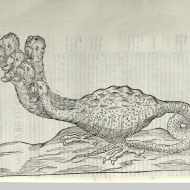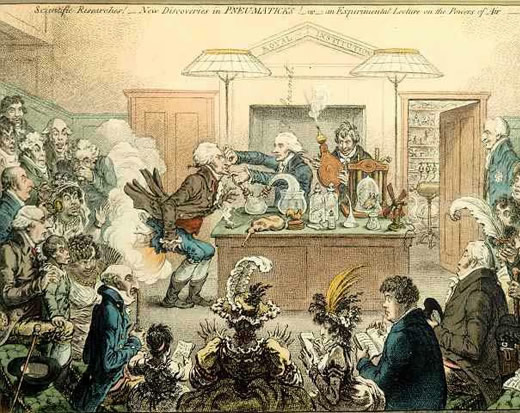Whewell’s Gazette
Your weekly digest of all the best of
Internet history of science, technology and medicine
Editor in Chief: The Ghost of William Whewell
Volume #45
Monday 27 April 2015
EDITORIAL:
Bringing you all the best of the histories of science, technology and medicine found in the Internet over the last seven days it’s your weekly #histSTM links list Whewell’s Weekly #45. This week our editorial takes a look at a piece of very recent history celebrating the twenty-fifth birthday of the Hubble Space Telescope.
The telescope first emerged in Holland in the last third of the year 1608. Within a year Thomas Harriot in England, Simon Marius in Germany and Galileo Galilei had all started to use it as a scientific instrument to observe the heavens and ushered in a completely new era in the history of astronomy. Throughout the seventeenth century telescopes got bigger and better and changed humanity’s knowledge and perception of the solar system. At the end of the century Isaac Newton succeeded in producing the first functioning reflecting telescope and changed the game once again.
Late in the eighteenth century William Herschel discovered Uranus, the first new planet to be observed in the solar system in the history of humanity, using his own handmade Newtonian reflecting telescope.
In the nineteenth century William Parsons, 3rd Earl of Rosse introduced the era of the giant reflectors. His Leviathan of Parsonstown , a 72 inch reflector, built in 1845 was the largest aperture telescope in the world until the twentieth century. The twentieth century saw telescopes getting larger and larger and humanity finally learnt that our solar system was only part of one of many galaxies and not the whole of the cosmos as had been thought since antiquity.
The twentieth century also saw the advent of the radio telescope in the nineteen thirties giving us a new way of ‘seeing’ out into space. Throughout the four centuries since the invention of the telescope, optics improved, lenses and mirrors were perfected and telescopes got bigger and bigger as well as technically more and more sophisticated. However observational astronomy was always limited by the problems caused by the earth’s atmosphere and so as the space age dawned astronomers dreamed of putting up a telescope, as a satellite, outside of that bothersome atmosphere.
Finally twenty-five years ago, the Hubble Space Telescope was launched into space on 24 April 1990 and became the biggest flop in space and telescope history. The telescope mirror was defective and the picture it produced so out of focus as to be almost useless. In 1993 in a spectacular operation astronauts ‘repaired’ the faults and Hubble finally began to deliver and deliver it did. The era Hubble has totally and radically changed the popular perception of space, turning an initial disaster into an indescribable scientific and technological triumph.
Whewell’s Gazette wishes Hubble a very happy twenty-fifth birthday
Gulf News Thinkers: Hubble telescope’s double achievement
Air & Space: 10 Hubble Images That Changed Astronomy
Motherboard: The Hubble Space Telescope’s 25 Most Mind-Boggling Photos
Pacific Standard: How the Hubble Space Telescope’s Iconic Photos Changed the Way Everybody Saw Space
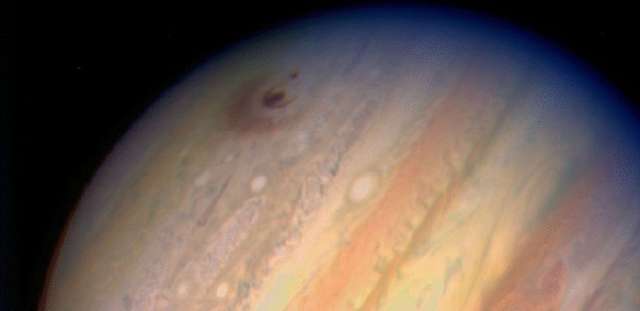
Image of Jupiter showing impact sites from Comet Shoemaker-Levy 9, taken July 18, 1994. (Photo: H. Hammel, MIT and NASA)
Leaping Robot: Observing the Astronomical Sublime
Slate: Happy 25th, Hubble!
Space Watchtower: Hubble Space Telescope at 25

This photograph, taken by the Hubble Space Telescope, was recently released by NASA, for the 25th anniversary of the telescope’s years in orbit of the Earth. The bright lights in the center of the photo is actually a cluster of about 3,000 stars that was discovered by Bengt Westerlund, a Swedish astronomer, in the 1960s. That cluster is now known as Wusterlund 2 and is located about 20,000 light years away from Earth and measures between six and 13 light years from end to end. The 2-million year old cluster is part of the constellation Carina and located in a section of space called Gum 29. Aside from the stars, which are relatively young in terms of space, the blue/green hues are oxygen and the red is hydrogen. (Image Sources: NASA, ecnmag.com )
The New York Times: 25 Years Later, Hubble Sees Beyond Troubled Start
Quotes of the week:
“Picking the lint out of Darwin’s navel” – Steve Jones regarding the re-re-re-re-discovery of Patrick Matthew (this is not news). h/t @matthewcobb
“Very interesting, but how many new “darks” before we accept we’re pretty clueless here?” – Philip Ball
“Can’t we just call being clueless “dark knowledge” and be done with it?” – Peter Broks
“This really feels like a time to call them “occult forces” again” – Becky Higgitt
“It’s when you prove something you thought of yourself that you become a mathematician.” – George Hart”
“I have tried lately to read Shakespeare, and found it so intolerably dull that it nauseated me. – Charles Darwin h/t @friendsofdarwin
One man excels in eloquence, another in arms. – Virgil
“Failure is an option here. If things are not failing, you are not innovation enough” – Elon Musk
“The greatest mistake any man ever made is to suppose that the good things of the world are not worth the winning.” ― Anthony Trollope
“At the core of all well-founded belief, lies belief that is unfounded”. – Ludwig Wittgenstein
“The limits of my language means the limits of my world.” ― Ludwig Wittgenstein
“Der Philosoph behandelt eine Frage; wie eine Krankheit.” – Ludwig Wittgenstein
“Thinking: the talking of the soul with itself”. – Plato
PHYSICS & ASTRONOMY:
History Physics: Lights in the Sky, in history
The Evening Sun: Another View: Einstein waged battle for right to a private life
CHF: Blast from the Past: Atomic Age Jewelry and the Feminine Ideal

A Vogue model poses before the Atomium, the symbol of the 1958 Brussels World’s Fair. By that time the atom had become part of popular culture.
Haaretz: This Day in Jewish History: The medieval rabbi who put Aristotle before God passes on
Journal-Democrat: Astronomy 101 leaves attendees to ponder Lewis and Clark, universe
MinnPost: Checking out Carleton’s Goodsell Observatory – and its fascinating history
Salon: “Albert is an old fool”: Einstein vs Schrödinger in battle of the Nobel Laureates
Quodlibeta: The earliest reference to a telescope: England 1551?
Ptak Science Books: On Question Marks in 19th C Meteor Spectra
Leaping Robot: Conversion Experiences
MHS Oxford: ‘Dear Harry…’ – Henry Moseley: A Scientist Lost To War
Physics Today: A good name rather than great riches
Yovisto: Wolfgang Pauli and the Pauli Principle
Falling Rocks: Meteorite: L’Aigle
EXPLORATION and CARTOGRAPHY:
The Washington Post: 30 fake maps that explain the world
Slate: The Invisible Tribute to the Paris Meridian
teleskopos: On longitude in BBC History Magazine
Mogan High History Academy: Calculating Longitude
The Renaissance Mathematicus: Abraham Ortelius and the 16th century information age
Friends of Darwin: Three old maps
British Library: Maps and views blog: Maps lie in a new online course
University of Glasgow Library: Mapping in the Fifteenth Century
Public Domain Review: Forgotten Failures of African Exploration
Harvard University Library Open Collections Program: Expeditions and Discovery
The H-Word: Happy birthday Robinson Crusoe: the fictional author of a “History of Fact”
Ptak Science Books: Maps of Things Not There: Eden
MEDICINE & HEALTH:
Scientific American: Mad Science: The Treatment of Mental Illness Fails to Progress [Excerpt]
Early Modern Practitioners: ‘John Houghton and Medical Practice in William Rose’s London’
Yovisto: Gustav Fechner and Psychophysics
Perceptions of Pregnancy: Using the “poisons of sterility”: Women and contraception during the Middle Ages
Slate Vault: Lists of Types of Mania and Melancholy, Compiled for Early-19th-Centuy Doctors
Early Modern Medicine: Prayers for Cures at the Baths
British Library: Medieval manuscript blog: Ointments and Potions
The Chirugeon’s Apprentice: Laennec’s Baton: A Short History of the Telescope
A Prairie Populist: The History of the “Black Dog” as Metaphor
The Recipes Project: Gout and the Golden Fleece: Experimentation on Recipes through Chymical Correspondence
History Today: The Importance of a Good Nights Sleep
Mental Floss: Women in Medicine: Five Firsts in Their Nations
The History of Vaccines: Timelines
National Humanities Center: Vaccinate for Smallpox?
Yovisto: Sigmund Freud’s Structural Model of the Human Psyche
Wellcome Collection: Nymphomania
Telegraph: Ancient Egyptian cure for a hangover…a garland of laurel leaves
Blink: Horrors of the East
Conciatore: Archiater
TECHNOLOGY:
Ptak Science Books: The Family Tree of Computer Development, Part II
Culture 24: Guinness World Record for pendulum clock vindicates John Harrison 250 years on
Yovisto: Marc Seguin and the Wire-Cable Suspension Bridge
IEEE Spectrum: New Theory Leads to Gigahertz Antenna on a Chip
Mlive: History of space travel the subject of a new show at Muskegon Community College’s planetarium
The Recipes Project: The Colour ConText Database
Invisible Themepark: Camper Built Inside a Car, 1952
Now Appearing: Mechanical computation
The New York Times: Auctioning the Relics of Technology Pioneers
Atlas Obscura: Ghosts of the Past: 5 Places to view your iPhone’s Ancestors
Gizmodo: Why Is It Called “Rebooting”?
Library of Congress: The Typewriter – “that almost sentient mechanism”
IFL Science: Mystery of How The Egyptians Moved Pyramid Stones Solved
EARTH & LIFE SCIENCES:
Race Card: How does a university deal with its legacy of eugenics?
Palaeoblog: Born This Day: Sir William Logan
Friends of Darwin: Metaphorical sight-seeing
Embryo Project: Paul Kammerer’s Experiments on Sea-squirts in the Early Twentieth Century
Live Science: Did Neanderthals Die Off Because They Couldn’t Harness Fire?
Notches: “The Gay Bulge” or Can We Study Medieval Sexuality Through Puns?

One Irishman kills another, from Gerald of Wales’ The History and Topography of Ireland (Image: BL Royal 13 B VIII)
AEON: Rethinking Extinction
The Return of Native Nordic Fauna: Thinking extinction with sci-fi
Palaeoblog: Darwin, Wallace & Patrick Matthew: Who’s Ideas on Evolution Came First?
BBC News: New mass extinction even identified by geologists
Yovisto: John Muir and the U. S. National Park System
Jonathan Saha: Colonial Canicide, Cruel to be Kind?
Ri Science: Happy Earth Day
HNN: Whatever Happened to the Environmental Movement?
NYAM: The Dragons of Aldrovandi
Natural History Apostilles: Lamarck’s analogy/homology of nature with culture
Natural History Apostilles: Naudin’s analogy/homology of natural and artificial selection
Yovisto: Alphonse Bertillon’s Anthropometric Identification System
Atlas Obscura: Shipwrecks, Scurvy and Sea Otters: The Story of Naturalist Georg Wilhelm Steller
Heilbrunn Timeline of Art History: Animals in Medieval Art
The Dispersal Of Darwin: Special Issue of Endeavour journal on Charles Darwin and Scientific Revolutions
Cal Tech Archives: Charles Richter
CHEMISTRY:
Distillations Blog: The Romance of Chemistry
The Royal Institution: New Discoveries in Pneumaticks
Voices of the Manhattan Project: Isabella Karle’s Interview
Gastropod: Savour Flavour
The Guardian: The first world war scientists who gave their lives to defeat poison gas
CHF: Chemical Warfare: From the European Battlefield to the American Laboratory
META – HISTORIOGRAPHY, THEORY, RESOURCES and OTHER:
Science Museum: The Kraszna-Krausz and First Book Awards 2015
Conciatore: Cross Pollination
Scroll.in: Christopher Alan Bayly, pre-eminent Western historian of India, dies
The Guardian: Sir Christopher Bayly obituary

Christopher Bayly arrived at St Catharine’s College, Cambridge, in 1970 and became profressor of imperial and naval history in 1992
Source: The Guardian
Science League of America: “But It’s Just a Theory”
Chronologia Universalis: An Annotated Postcard
The 2015 Pulitzer Prize Winners: General Nonfiction: “The Sixth Extinction: An Unnatural History” by Elizabeth Kolbert
AHA: Perspectives on History: “Let’s Put History Everywhere”: A Career Diversity for Historians Interview
History of Medicine.com: An Interactive Annotated Bibliography of the History of Medicine, Biology and Dentistry from Circa 2000 BCE to Circa 1980
Consortium for History of Science, Technology and Medicine: Announcing 2015–2016 Fellowship
Mittelalter: Identifying manuscripts in social media
AHA Today: Draft Guidelines on the Evaluation of Digital Scholarship
Quod.Lib.umich: The Hermeneutics of Data and Historical Writing
Thinking Like a Mountain: Experimental and Speculative Hypotheses in the Seventeenth Century: Integrated History and Philosophy of Science Workshop University of Durham (Part 1 of 2)
The Village Voice Blog: Ask Andrew W. K.: ‘How Do I Show Religious Freaks That Science Wins?’
The Nature of Reality: Why Physics Needs Philosophy
Now Appearing: Writers and social media
JHI Blog: What We’re Reading: Week of April 20
AHA: Career Diversity for Historians
Remedia: High Dilution, Homeopathy, and the Purpose of the Scientific Journal
Open Book Publishing: Mikuláš Teich – The Scientific Revolution Revisited
It’s About Time: 1565 The Seven Liberal Arts by Cornelis Cort
LOVEIMPERIALWARMUSEUMLIBRARY: Imperial War Museum London Is Not “Museum of the Year”
Ether Wave Propaganda: Scientists and the History of Science: An Alternative View
ESOTERIC:
Heavy: Loch Ness Monster Google Doodle: 5 Fast Facts You Need to Know
History of Alchemy: Johann Rudolf Glauber
Conciatore: Salamander
Nemfrog: Spiritograph in use

Plate I. Spiritograph in use. Experimental investigation of the spirit manifestations : demonstrating the existence of spirits and their communion with mortals. 1855.
BOOK REVIEWS:
Science Book a Day: Eye of the Beholder: Johannes Vermeer, Antoni van Leeuwenhoek, and the Reinvention of Seeing
The Daily Beast: How Two Dutch Geniuses Taught Us to See
Science Book a Day: After Physics
New Scientist: The Vital Question: Finding answers about the origins of life
The Guardian: The Vital Question: Why Is Life the Way It Is? Review – back to biological basics
Alec Ryrie: Aphrodisiacs, fertility and medicine
The New York Times: ‘Finding Zero’: A Long Journey for Naught
The New York Times: Lives of the Scientists: We Could Not Fail and More
NEW BOOKS:
University of Notre Dame Press: Setting Aside All Authority: Giovanni Battista Riccioli and the Science against Copernicus in the Age of Galileo
Historiens de la santé: Medical Negligence in Victorian Britain: The Crisis of Care under the English Poor Law, c.1834–1900
HSS: ISIS Books Received: January–March, 2015:
Brill: The Technique of Islamic Bookbinding
Harvard University Press: Daughters of Alchemy
THEATRE:
FILM:
TELEVISION:
SLIDE SHOW:
VIDEOS:
Youtube: Lawrence Principe – Glass of Antimony Reconstruction
YouTube: How to make a Scientific Revolution
YouTube: Battle of the Nobel Laureates: Einstein and Schrödinger’s Clashing Theories
YouTube: Tour of an Alchemy Laboratory
RADIO:
PODCASTS:
ANNOUNCEMENTS:
University of Aveiro, Portugal: CfP: 10th International Conference on the History of Chemistry 9-12 September 2015
University of Leeds: HPS Seminar, 2014-15 Semester 2
University of Roehampton: CfP. One-Day Colloquium: The Darwins Reconsidered: Evolution. Writing & Inheritance in the Works of Erasmus and Charles Darwin
Gender and Work in Early Modern Europe: New proposals wanted for Ashgate series Women and Gender in Early Modern World
Royal Museums Greenwich: ‘unseen’ Symposium 30 May 2015
Niche: CfP: The Environmental Histories of Ports and Ocean Trade Liverpool 18-19 September 2015
University of Oulu, Finland: CfP: Testing Philosophical Theories Against the History of Science 21 September 2015
University of Durham: The History of Thermodynamics and Scientific Realism 12 May 2015
NYAM: History of Medicine Night: 19th and 20th Century Stories 6 May 2015
University of Aarhus: CfP: Workshop: 1970s: Turn of an era in the history of science? 14-15 September 2015
Warburg Institute: Maps and Society Lectures: ‘Reforming Cartography: John Britton and The Topographical Survey of the Borough of St Marylebone (1834) 30 April 2015
Federal Center of Technological Education of Rio de Janeiro: 13th Biennial International IHPST Conference 22-25 July 2015
The British Institute for the Study of Iraq: The Annual Bonham-Carter Lecture Professor Emilie Savage-Smith on ‘Surgeons and Physicians in Medieval Iraq’ 11 June 2015
LOOKING FOR WORK:
UCL: STS vacancies
University of Liverpool: Lecturer grade 8 in the history of Medicine
New Statesman: Join the New Statesman web team as a science and tech writer
University of York: Assembling Alternative Futures for Heritage: Curating Profusion PhD Studentship
University of Vienna: The Doctoral Program “The Science in Historical Philosophical and Cultural Contexts”
National Railway Museum: PhD Studentship
UCL:STS: Research Associate: Economics in the Public Sphere – 2 Posts


